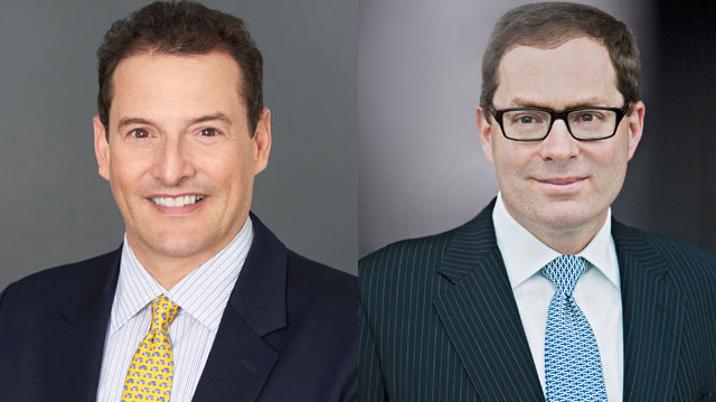
Hearst’s January absorption of Rodale Inc – adding Men’s Health, Women’s Health, Runner’s World, Bicycling and Prevention to Hearst Magazines’ 25 US and 19 UK brands – falls into the momentous category, in my book.
Not long ago, Rodale was the go-to case study of a smart, privately-held magazine publisher, having been a pioneer of brand extensions like books (including bestselling health titles and Al Gore’s An Inconvenient Truth); e-commerce (it was brilliant at using direct marketing techniques to engage and convert web users); and (like Hearst) international magazine editions. On the last front, Rodale added 62 print editions (mainly the MH brand) and 57 websites in 31 countries to Hearst’s 300 international print editions and 200 websites.
Hearst, of course, immediately moved to integrate the Rodale titles into its operational and editorial systems. The latter now organises brands into groups by audience / subject matter, to maximise staff and cross-brand print content efficiency – in line with the dynamics behind its unified, all-brand digital content ecosystem. A few editors-in-chief and many operations staff were among the at least 185 Rodale employees let go (on top of scores already laid off in 2017, under Rodale’s ownership).
For those who made the cut, there are a lot worse places to end up than Hearst Magazines – which, according to president David Carey, saw its earnings decline by a mere single-digit percentage in 2017, after four straight years of growth. Carey also recently said that two-thirds of magazine revenues still come from print – although the company is accelerating its efforts to grow paid digital magazine content (it’s had some success with newspapers), and is pushing hard on all audience data, channel and content formats important in the battle for digital ad revenue (fully a third of the magazines’ content is video now).
Still, Rodale’s end speaks to the regrettable trend of mid-sized magazine companies being absorbed or disbanded amid the brutal realities of trying to compete with the big platforms’ death-grip on advertising. Another case in point: large global player Bonnier is clearly not willing to keep taking financial hits from its once mid-sized, but quickly shrinking, US division. In January, 70 more people were laid off there (leaving about 350), as another five vertical sporting titles were shuttered.
Time (Doesn’t) March On
The hands-down show stopper of recent months (and decades) was, of course, the sale of Time Inc to Meredith Corp, for $1.85 billion. For sheer end-of-an-era impact, the dissolution of what was for many decades among the most influential media companies in the world is hard to beat. But while current and former Time Inc employees did lament the death of the nearly century-old brand – on social media and in bars around Manhattan – the overall buzz quotient and its staying power were rather more subdued than would have been true even a decade ago.
I chalk that up to several factors. Only Baby Boomers can remember the power and prestige once associated with Time Inc, or feel nostalgic for its once-vaunted wall between editorial and advertising (a concept that’s now largely vestigial across media companies). In addition, there’s the simple reality of micro-second attention spans, thanks to the endless news, fake news and annoying family posts playing out on our screens.
But another big contributor to the almost “meh” reaction was the protracted nature of Time Inc’s death throes – and the ceaseless pronouncements of its imminent demise by media pundits and analysts for four long years, starting with its spin-off from Time Warner in 2013. Thanks to that cynical barrage, the whole thing began some time ago to be reminiscent of the ‘Not dead yet’ scene from Monty Python and the Holy Grail.
Actually, there’s a strong case to be made that the writing first appeared on the wall some seventeen years ago, when then CEO Gerald Levin, who had orchestrated the merger of Time Inc and Warner Communications in 1989, brokered another deal – this time a takeover by AOL. Levin hoped that this radical move would break Time Warner out of a digital-adverse stranglehold born of fear of undercutting the traditional print advertising and circulation revenue streams.
For an excellent rundown of the long slide that commenced, I recommend Howard G Gold’s recent summary in Columbia Journalism Review. For now, I’ll just quote a few crucial points from that piece: “The AOL-Time Warner deal is generally considered the worst merger ever. When Levin and AOL chairman Steve Case agreed to combine (the deal closed in early 2001), the top of the internet bubble was only weeks away. AOL’s business would never recover. The ‘synergies’ between the two companies – the rationale for the whole deal – never panned out. Time Inc’s content now had a new ‘pipeline’ (through AOL’s network of 26 million subscribers), but the internet was starting to pass AOL by. AOL had simply become a much larger version of Pathfinder – and was perhaps even more damaging to Time Inc’s brands.” (FYI, Pathfinder was an early, disastrous Time Inc web content platform that then-CEO Don Logan dubbed a “black hole,” referring to the seemingly bottomless costs involved.)
Try as they might to adapt to an instant-information world, subsequent CEOs could not overcome the structure and corporate culture born of publishing print newsweeklies – including a compensation system that served to disincentivise innovation by managers. For the long-wounded Time Inc, being saddled with $1.4 billion in debt when – after 24 years – Time Warner finally managed to shed it through a spin-off, did indeed prove to be the coup de gras.
In the end, Meredith’s acquisition was apparently considered good, or at least hopeful, news by many Time Inc employees, after years of painful uncertainty – despite the prospect of losing their jobs. The real kick in the pants was facing that uncertainty while watching the outgoing top managers collect unseemly golden parachutes (ranging from $6 million to $15.8 million) and giddily praise themselves for orchestrating a deal that made it possible for them to retire in luxury, if they so choose. The final indignity: a video made for outgoing CEO Rich Battista by his top lieutenants (which got leaked and posted on YouTube) showing those executives standing on their desks and saluting Battista with Walt Whitman’s “O Captain! My Captain!,” à la the culminating scene of Dead Poets Society. Ugh. As one “insider” told the New York Post, “These guys knew where the ship was heading and raided the booty – then toasted themselves for being geniuses. A lot of hardworking people are out of jobs. It’s a shame.” Another put it this way to Vanity Fair’s Hive: “I’d rather watch my parents have sex than watch the rest of this.”
Underestimating Meredith: A Huge Mistake
The important questions, of course, centre on what the new, combined company – and the consumer magazine media world as a whole – will look like now that Meredith Corp is its largest player.
Well, I certainly don’t have to inform you, dear readers, that once Meredith took official possession, it moved quickly to complete an already-underway deal to sell Time Inc UK to the London-based Epiris Fund II private equity firm.
The price – about $167 million, a British source told the New York Post – was rather a shocking comedown from the $1.6 billion that Time Warner paid for IPC back in 2001, even in today’s print-phobic investor milieu. But the PE ownership may work in favour of keeping the company together, say some M&A players. “Historically, private equity firms have not been as aggressive in selling off pieces,” Reed Phillips of investment firm Oaklins DeSilva + Phillips recently observed. “They don’t have to worry about a strategic fit since they don’t own any other magazines.”
Meredith also moved swiftly to shut down the Florida-based Time Customer Service fulfilment centre, causing some 600 layoffs. Employees were quoted as saying that what really hurt was that after months of efforts, Time Inc had been on the verge of closing a deal to sell the operation. But if such a deal was indeed imminent, Meredith clearly determined that the price was not worth enabling a competitor to CDS Global, the Hearst-owned fulfilment operation that’s used by Meredith and basically all consumer magazine media companies of any size, thanks to the consolidation of the past two decades. Again, scale reigns. As we all know, the larger the volumes of direct mail and digitally-generated sub transactions, the lower the cost to the publishers using a fulfilment house. And saving a cent, or even a fraction of a cent, on every transaction adds up to big savings when you’re talking many millions or even billions of transactions over the course of several years.
Which brings me to the most important truth about Meredith. Over the years, many of the proverbial big city slickers at Time Inc mocked Meredith’s midwestern sensibility and corny (they’re based in Iowa, after all) magazines, expressing disdain or horror at the mere thought of being owned by such an unsophisticated media company.
But Meredith is having the ultimate last laugh, because its conservative, no-nonsense, quintessentially pragmatic approach to the business of media won out. Meredith’s genius at serving valued content to a huge percentage of women in the US, combined with management patience and fiscal discipline, put it in a position to acquire the iconic Time Inc – in a deal that was no doubt parsed down to the dollar in terms of how the ROI would play out once Meredith slashed costs and sold off specific Time Inc properties.
Meredith, a public company, has stated that it expects to cut $400 million to $500 million of costs out of what was once Time Inc. All signs point to it hanging onto People – the highly profitable crown jewel in the Time Inc buy – and selling off Time, Sports Illustrated, Entertainment Weekly and Fortune, because weeklies and men's titles don't fit with its portfolio of female-targeted monthly titles.
Meredith has also stated that it expects to finish its review of the Time Inc portfolio by mid-spring and has indicated that title sell-offs “might” result, and more tellingly, has said that it expects to have a magazine division “relaunch” of sorts once its portfolio has been honed. “We want to be clear to the advertising market that this is what we have and this is what we’re selling,” a Meredith spokesperson told WWD.
One thing we know: in the end, every decision that Meredith makes will be based on bottom-line dollars and cents – not in the short term, but over the next five years, decade or beyond. It may lack artistic, cutting-edge content innovation, but it will invest in technological innovation and apply the most sophisticated predictive models and strategic brainpower available as it methodically continues to grow its media properties, market share, and profits. Given the dearth of any truly paradigm-shifting editorial launch concepts out there, perhaps financial stability and growth are the new ideal. Though I doubt that Henry Luce and Briton Hadden would RIP if they knew that.










